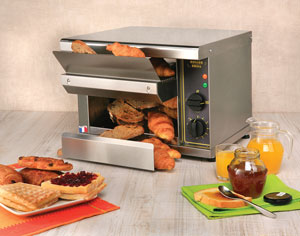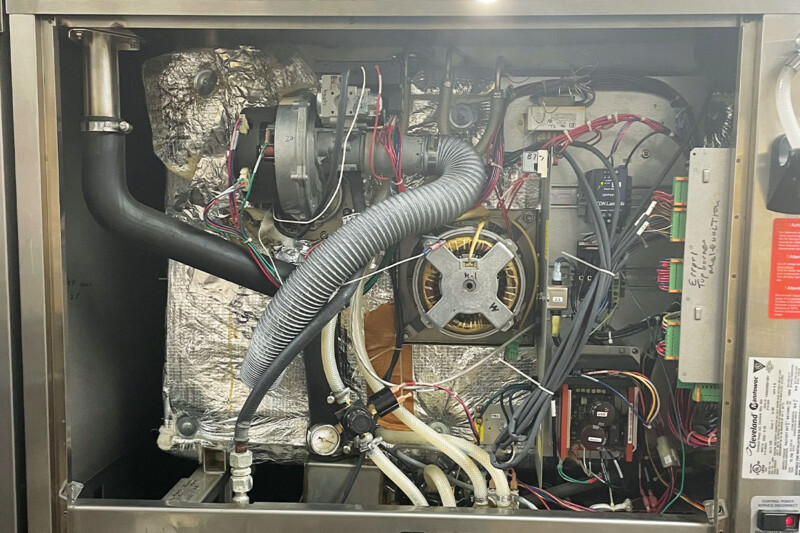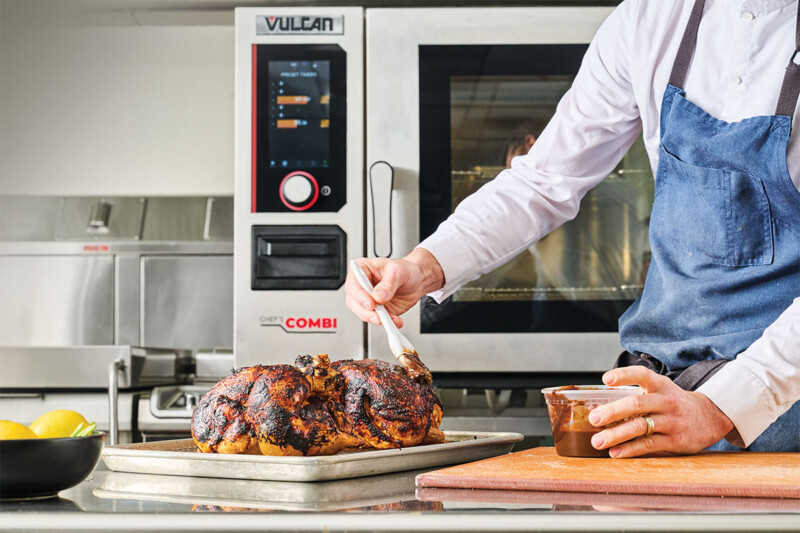 It’s 7 a.m., you have a steady crowd of customers ordering breakfast, everything from steak and eggs at the bar to pancakes in the corner booth. Your restaurant is filled to capacity; every table is occupied. Each of your breakfast meals are accompanied by the usual coffee, juice or tea and, of course, what would breakfast be without a side of delicious, hot-buttered toast? Keeping up with the rush is easy with a commercial conveyor toaster, but if it goes down, so does your customer satisfaction.
It’s 7 a.m., you have a steady crowd of customers ordering breakfast, everything from steak and eggs at the bar to pancakes in the corner booth. Your restaurant is filled to capacity; every table is occupied. Each of your breakfast meals are accompanied by the usual coffee, juice or tea and, of course, what would breakfast be without a side of delicious, hot-buttered toast? Keeping up with the rush is easy with a commercial conveyor toaster, but if it goes down, so does your customer satisfaction.
Time To Toast The Winner
Your conveyor toaster is a reliable piece of equipment. It requires that you follow some simple daily maintenance procedures and in return, it will provide you with years of trouble-free service. Each piece of toast consistently comes out of the toaster with crisp texture and golden-brown color. You don’t have to babysit a two-, four-, six- or even eight-slice toaster; or even worse, stare at your grill hoping not to burn the bread. That’s not to say that other methods of toasting bread won’t work, but a conveyor is the most consistent and fastest.
Although there are many manufacturers of conveyor toasters, they all seem to have one maintenance step in common: read the operating manual. By reading the manual that comes with your toaster, you’ll learn what are good (and bad) practices specifi c to your toaster. In speaking with a few manufacturers’ reps, they mentioned that many of the service calls they get can be avoided by just reading the manual. (Examples include which cleaners to use, or what to do if the product isn’t coming out.) Your best bet: assign the task to a specific employee and have them in turn train everyone else on proper toaster care.
Cleaning Tips
In most cases, you can easily keep up the exterior appearance of your toaster with a mild detergent and a damp cloth. Occasionally you may need to use a stainless cleaner. Whenever you feel the need to use a stronger product, for stuck-on debris or stains, make sure you consult the operator’s manual first because using the wrong cleaner or the right cleaner at the wrong strength can damage stainless and other materials.
Heating elements are critical components and usually don’t require maintenance during the life of the unit. However, if dust and debris accumulates on the elements, they may slowly lose their toasting effectiveness.
Cleaning the elements will depend on which type of element your toaster has and the manufacturer’s recommended process for cleaning them. In most cases, if you have a metal-sheathed element, use a simple long-handle wire brush to remove excess particles. But fi rst, turn off the power or unplug the unit and let it cool down.
Glass tube or quartz elements are more fragile and as they gather debris, they’ll turn a cloudy color. Although this may appear to weaken the effectiveness of the elements, which use infrared technology, it actually doesn’t. According to a seven-year test performed at a major brand’s facilities, there was no signifi cant reduction in heating capacity if the glass tube was cloudy. You’re actually taking a bit of a risk if you try and clean quartz elements; they can become brittle with age. If they do get too covered in built-up debris, a service tech can use a green scrub pad to gently clean the elements, but he or she will only do it when the elements are cool; hot elements are more fragile. The tech might even remove them from the toaster to clean them and have replacement tubes on hand, just in case.
It’s A Crumby Job
Crumbs are a byproduct of toasting but a crumb tray or built-in catch box contains them. Make it a practice to dump these catchers daily. Otherwise the little particulates can build up and ultimately interfere with the mechanical workings of the toaster. As debris settles onto gears and shafts, and the temperature rises, these bits start to caramelize. This process can cause the conveyor mechanism to misalign and poor operation ensues, increasing the potential for damage to the toaster, resulting in an expensive service call.
Getting Out Of A Sticky Situation
One of the most common complaints from operators is about bread sticking to the conveyor. This results from excessively moist bread—especially breads with a high sugar content—coming into contact with a hot conveyor chain. The same caramelization we mentioned earlier can fuse the bread onto the chain and, as it reaches the point where it should release, it can’t break free. Back it rides into the toaster and inevitably starts to overheat and burn. This distinct aroma of burnt toast signals the operator to stop the toaster, unplug it or turn it off, let it cool, clear the debris, wipe off the chain and resume the process—a big delay in service. Reduce moisture by letting your breads dry out a bit. One way to do this is to stage the bread on the toaster’s loading rack or slide—both serve a dual purpose of letting the bread air-dry a bit as well as guiding the bread onto the conveyor. Don’t bypass the loading rack or slide to save time by placing the bread directly onto the conveyor.
Reading Is Fundamental
If you have a conveyor toaster or you’re in the market for one, it may appear as if the unit is plug-n-play and it pretty much is, but an investment of this amount should warrant you taking the time to read the operator’s manual so that you can get the most out of it, and not void the warranty. Understand proper use. A few minutes of reading can equal a lifetime of savings.
Basic Cleaning Procedures
• Always consult the operator’s manual for specific directions.
• Safely turn off or unplug the unit before cleaning.
• Allow the unit to cool down; make sure it’s safe to touch.
• Empty the crumb trays or boxes.
• Remove and wash, with approved detergent or cleaner, all indicated and detachable pieces as specifi ed in the owner’s manual. Allow pieces to air dry before reassembling.
• Use a mild detergent solution and a non-abrasive damp cloth to wipe down and clean the exterior.
• If parts require lubrication as specified by the manufacturer in the owner’s manual, use food-grade lubricants only.
• If any repair or service is needed, refer to a qualifi ed, approved service agent only. Contact the manufacturer for a list of approved servicers.
Conveyor Toaster Makers
Admiral Craft
admiralcraft.com
Antunes
ajantunes.com
APW Wyott/Standex
apwwyott.com
Avantco
avantcoequipment.com
Bakemax
bakemax.com
Belleco
bellecocooking.com
Equipex
equipex.com
Franklin Machine Products
fmponline.com
Hatco Corp.
hatcocorp.com
Marshall Air Systems
marshallair.com
Nemco Food Equipment
nemcofoodequip.com
Sitaras Toasters
sitarastoastersllc.com
Star Mfg./Middleby
star-mfg.com
Toastmaster/Middleby
toastmastercorp.com
Waring Commercial
waringcommercialproducts.com
RELATED CONTENT
- Advertisement -
- Advertisement -
- Advertisement -
TRENDING NOW
- Advertisement -
- Advertisement -
- Advertisement -


